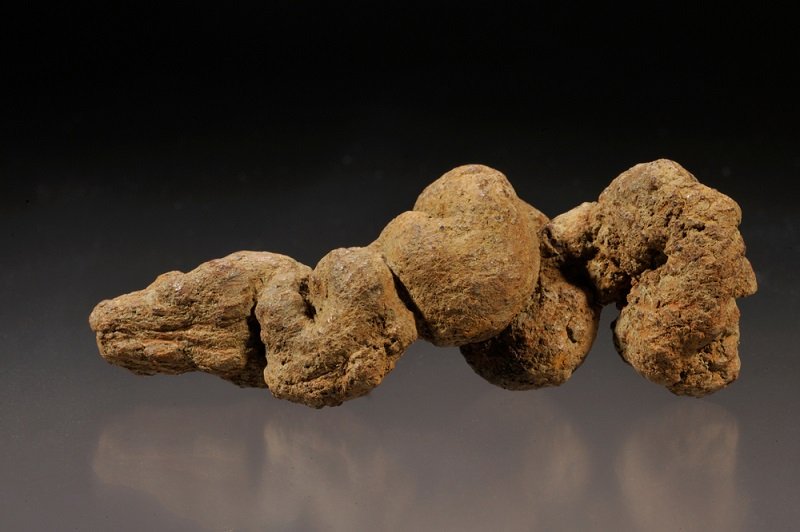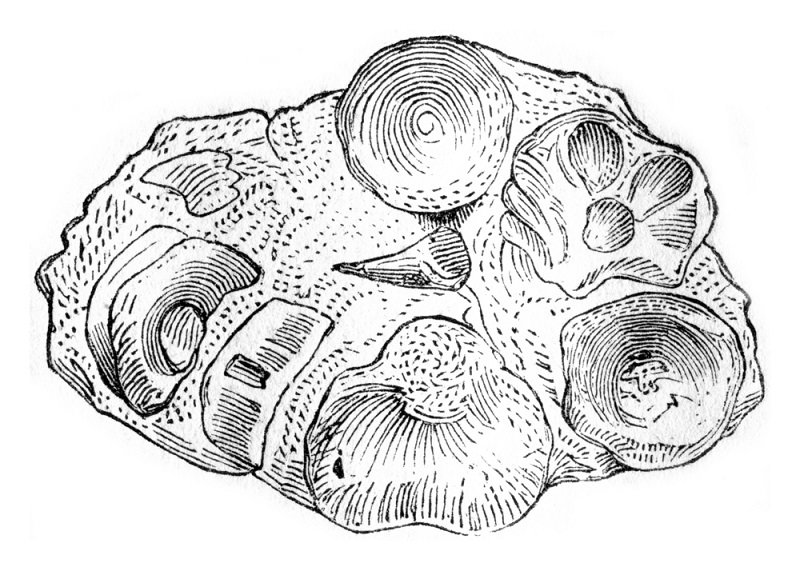How Can Coprolites Tell Scientists What a Dinosaur Might Have Eaten?
Coprolites are the fossilized feces of prehistoric animals (enter poop joke here!) They can exist found in sedimentary deposits throughout the world, including locations all over the U.s., Canada, Australia and Europe.
The starting time coprolites were discovered by Mary Anning in the early on 1800's who theorized that the strange "poop shaped" fossils she found were actually the fossilized poop of dinosaurs…the ichthyosaurs and plesiosaurus.
Then later in 1829, William Buckland observed that the fossils she had been finding contained things such equally fish scales, basic and other inclusions. And he agreed, that in fact these were dinosaur poop fossils.
Since then many other types of fossils have been found within coprolites including plants, pollen grains, insect remains and fifty-fifty microscopic fauna burrows!
How To Identify Coprolites
In this guide on how to identify coprolites, you'll learn about all the different types of samples and what kinds of things to look for when looking for your own coprolite specimen.
Shape

Does the rock wait like poop? Identifying coprolites can be catchy, but one of the easiest and fastest means to place a coprolite is by their shape. If you're unsure if a rock is a coprolite, effort comparing it to the size and shapes of mod poop balls.
Does information technology accept a apartment pancake advent like a modern day moo-cow? Or is it sausage shaped like a dog poop?
The overall shape is going to be the commencement clue on whether or not you take coprolite.
Location
This may seem obvious, but the next thing to consider in deciding whether or not y'all have bodily coprolite is where information technology was found.
Accept other fossils like bones, teeth or even animal tracks been found in the aforementioned area? Coprolite is almost ever accompanied by other fossilized show of prehistoric animal activity. Rarely, if ever, will coprolite be institute completely on its own.
Inclusions

Some coprolites take some crazy stuff constitute within of them such as fish scales, institute material, bones and teeth! It'due south neat that we can see these things inside an animal's poop that lived millions of years ago.
Just like modern day animals, some prehistoric animals ingested stones for ballast or digestive purposes. These are known every bit gastroliths which tin can also be found in coprolites. If present, they generally have a smoothen surface.
Looking Nether A Microscope
The way an object looks under a microscope can tell yous whether or not it's a coprolite. If your specimen appears to be granular, unfortunately, it is probably not a coprolite.
In that location are exceptions to this rule though. For instance, marine creatures that consume sediment from the bottom of the ocean flooring would have food particles in their debris and appear granular even if they were actually coprolites.
That is why understanding where your specimen was discovered and what kind of geology resides there is so important!
Limerick
Because herbivore feces tends to break a office and decompose rapidly, it rarely survives the fossilization process. So about fossil poo that is found is from carnivores.
The reason for this is that their poop is usually high in calcium phosphate, the aforementioned mineral found in bone. This mineral can appear in many forms. Information technology can be hard and dumbo or soft and porous.
If the potential coprolite appears soft and porous, there is a quick test that is often used in the field. If y'all wet your finger and touch the rock to the tip of your moisture finger and it sticks, chances are, it is loftier in calcium phosphate and could mayhap exist a coprolite.
If the calcium phosphate takes a harder, more than dumbo grade, the "wet finger test" won't work. In some instances, chemical assay is required to definitively place the mineral limerick.
What Are Coprolites?
Coprolites are the fossilised faeces of animals that lived millions of years ago. Coprolites are trace fossils which means that they are not fossils of the animal's actual trunk, but of something that came from the animals trunk.
Coprolites are like time capsules and provide an unparalleled insight into the by. That's because many coprolites contain inclusions, or tiny fossilized fragments of the food or material that the animal ate.
Do Coprolites Smell?
No, coprolites do non smell. Even though a coprolite is the fossilized remains of an animal'due south actual poop, it's no longer poop. Since information technology's gone through a fossilization process and all of the biological material has been replaced past minerals and turned into stone, there's no longer a poopy odor to the animal dung.
How Are Coprolites Formed?
How does poop become a fossil? When the conditions are but right, it happens just like any other fossilization process. The process is very similar to how petrified wood is made.
In order for the poop to turn into a fossil, it had to be covered upwardly very quickly with soil rich in minerals. Once covered, and the poop is deprived of oxygen, the decomposition process of the organic material is halted.
Over many, many years the original organic poopy material is infused with mineral rich water. Much like petrified wood, these dissolved minerals brainstorm to crystalize over time, replacing the original organic material with crystalized minerals, essentially turning the poop into rock.
Source: https://www.rockseeker.com/how-to-identify-coprolite/
0 Response to "How Can Coprolites Tell Scientists What a Dinosaur Might Have Eaten?"
Post a Comment